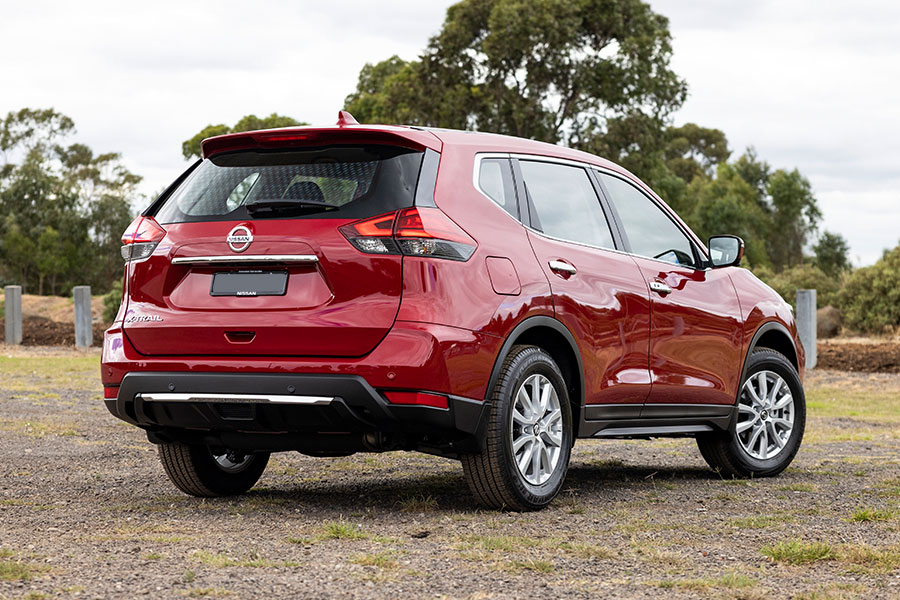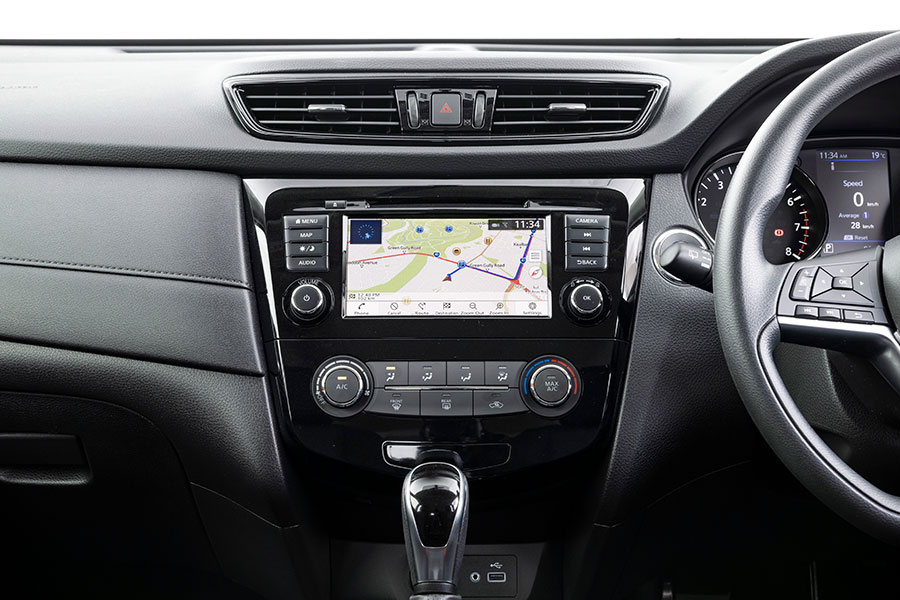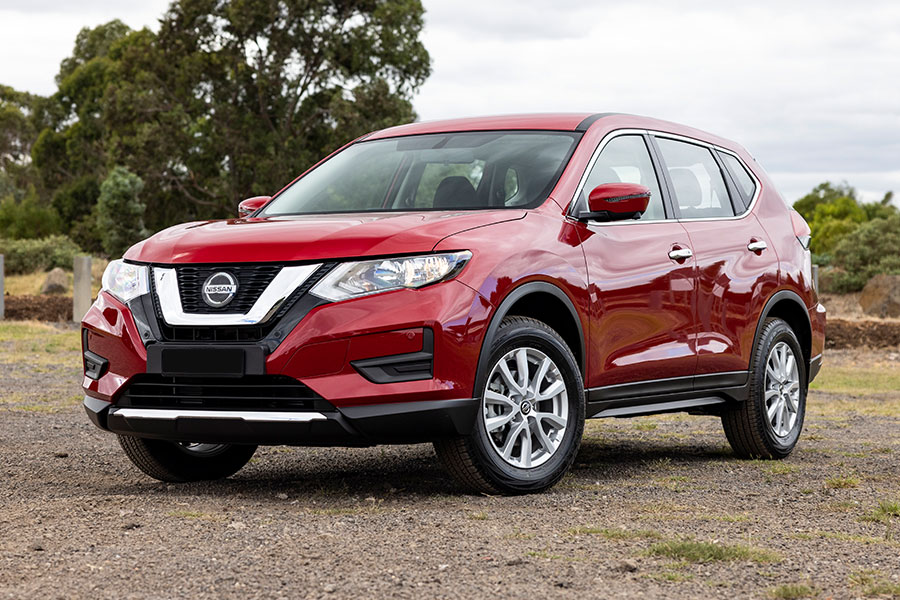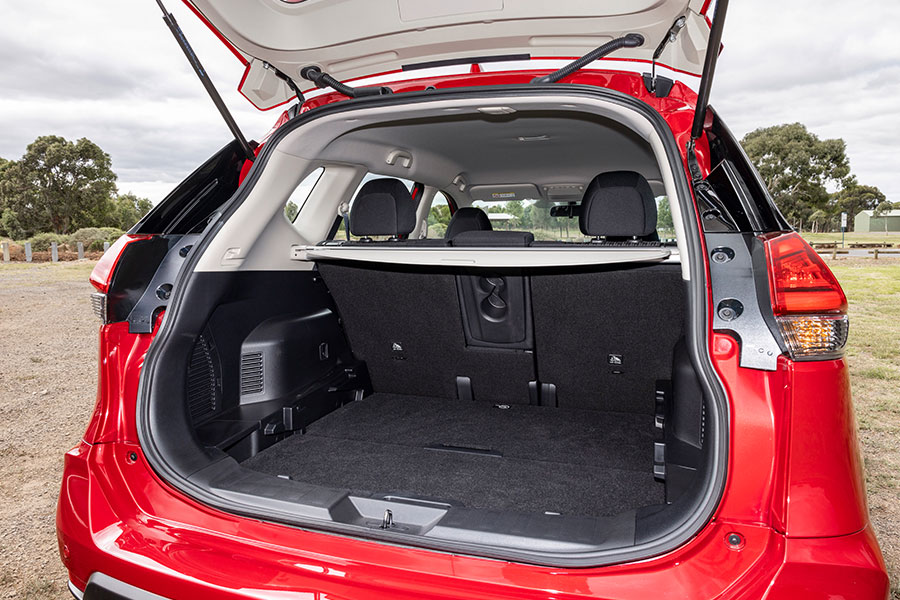Whether you’re ready to get started or would like to know more, we’re here to help.
By Tim Britten, carsales.com.au
A brand-new Nissan X-Trail is about to drive into Australian showrooms later this year, bringing more technology, space, style and improved safety systems to the popular compact SUV. But all that will come with a price premium over the current model.
What that means is the now eight-year-old soft roader is moving into the runout phase, the twilight period of a vehicle’s lifecycle where car makers traditionally attempt to arrest declining sales by offering some form of incentive, either by slashing the price tag or adding equipment to improve its value.
Nissan has taken the second option and tweaked the X-Trail range and introduced a new, value-packed model, the ST+ that we’re testing here.

Based on the entry-level ST variant, it brings a few extra goodies to the party. But do they offer enough to keep the X-Trail entertaining, or is it worth waiting for the new one? Let’s find out…
It’s a plus
One of the unique selling points for the Nissan X-Trail is that lower-grade ST and ST-L models have the option of either five- or seven-seat configurations, giving it greater flexibility for growing families.
But the ST+ is strictly offered as a conventional five-seater. It does, however, come with the recently updated, larger-capacity 126kW/233Nm 2.5-litre petrol four-cylinder and a continuously variable automatic whereas the ST has a 2.0-litre engine and a manual gearbox as standard.
Our test vehicle is in the most affordable front-drive configuration and is priced from $34,140 (plus on-road costs). But buyers can pay $2000 for the added security and traction of an all-wheel drive transmission. Either way, the ST+ costs $1475 more than the equivalent five-seat ST auto.

What you get for the extra spend is standard satellite navigation, bird’s-eye view parking cameras and parking sensors at both front and rear. Otherwise, it shares the same standard features as the ST, including push-button start, a 7.0-inch touchscreen controlling Apple CarPlay and Android Auto functions, Bluetooth, digital radio and voice recognition, an electric parking brake and air conditioning with rear vents.
The seats are comfy and trimmed in durable cloth material but there’s no power adjustment or heating function and the plastic steering wheel feels a bit bargain basement. That’s not to say the rest of the cabin is cheap and cheerful. Even at this level it passes muster with the use of decent-quality vinyl trim, piano black highlights on the dash and centre console, a digital display with on-call driving information located between the two analogue dials in the dash and clearly laid-out controls.
The X-Trail ST+ rides on 17-inch alloy wheels, has electric-folding rear-view mirrors and a roof spoiler.
Safety dance
The Nissan X-Trail has a few age-related wrinkles when it comes to safety.
At the lower end of the model range, not much has changed since this generation was first launched in 2014. Back then, autonomous emergency braking (AEB) had yet to be mandated as the base criteria for five-star ANCAP crash test ratings and, along with other electronic driving aids such as lane departure warning, blind spot monitoring and adaptive cruise, were limited to the then-flagship TL model. That was it.
It's a much different story today, as the range-topping X-Trail Ti comes equipped with semi-autonomous functions like pedestrian avoidance, lane keeping assistance, rear cross traffic alert and driver attention detection.
But other models, including the ST+, are not so gifted. Our test car’s active safety roll call is limited to anti-skid brakes, traction and stability control, AEB with forward collision warning, automatic headlights and a reversing camera with 360-degree view.
All Nissan X-Trail models have six airbags and score five ANCAP safety stars, awarded when less-stringent assessment criteria was in place back in 2017.
The simple things
There’s nothing flash or high-tech under the bonnet of the 2022 Nissan X-Trail.
The powertrain is relatively simple; a naturally-aspirated 2.5-litre four cylinder petrol engine that produces 126kW of power and 233Nm of torque that is also found in the related Renault Koleos SUV.

An upgraded version of the same motor is found in the new Mitsubishi Outlander that generates 135kW and 245Nm and will make its way into the new X-Trail that is due to arrive locally before the end of the year.
As it stands now, the engine is not impressively productive but it is helped by the fact that the ageing X-TRAIL, in ST+ trim, is pretty light at 1458kg. As Nissan’s mid-size SUV makes a generational change later this year, it will also become heavier, which will have a negative impact on performance and fuel consumption.
Just like the Koleos, the X-Trail’s engine is dulled by the CVT transmission. While it’s effective when accelerating because it optimises engine speed for maximum torque, the audible outcomes are irritating. The constant drone as the CVT holds rpm at the most efficient level in the rev band is invasive and never pleasant.
Unquestionably, CVTs do an efficient job. But in the case of the current Nissan X-TRAIL, it’s not quite as efficient as we’ve already seen in the new-gen Mitsubishi Outlander.
Nissan claims the X-Trail – which has a 60-litre fuel tank – returns 7.9L/100km on the combined cycle but we found that figure to be optimistic in the real world, recording an average of 8.5L/100km during our test period.
Family room
The 2022 Nissan X-TRAIL uses a MacPherson strut front suspension and an independent multi-link arrangement at the rear, no matter whether it is in front- or all-wheel configurations.
This is a decent basic set-up for uniformity of handling and – as the ST+ is unburdened by the compromises of bigger, heavier wheels with low-profile tyres – it produces a nice, comfortable ride.
The counter point to that is the smaller wheel-and-tyre combination doesn’t help the handling of the ST+ a great deal. Riding on 225/65R17 tyres, it is more compliant but less grippy than the flagship Ti, which runs 225/55-section 19-inch rubber. Presuming that neither are being considered as sports cars, it’s reasonable to suggest that for most X-TRAIL buyers the comfier ST+ offers the better balance.
The steering, which has precisely three turns lock-to-lock for a relatively wide 11.3-metre turning circle, is light enough for easy manoeuvring in urban environments and communicative enough when pressing on.
Where the Nissan X-TRAIL has always scored is in its passenger and luggage-carrying abilities.

In five-suit guise, the 565 litres of boot capacity makes it one of the most capacious in its class. It also has a handy double floor which can be repurposed in various ways including setting the upper half-floor vertically as a buffer to sliding loads, which makes you wonder why all SUVs don’t use a similar system.
There’s added flexibility in the rear seat too, which can slide forward or backwards to extend passenger or loading space and features 60/40-split folding (and reclining) backrests. Even in the forward-most position, there’s still plenty of legroom for rear seat occupants.
With good headroom and shoulder-room throughout the cabin, the Nissan X-TRAIL is a particularly versatile mid-size SUV. And it can tow up to 1500kg with a braked trailer.
It’s about time
There is a lot to like about the Nissan X-Trail; from its dependable, simple mechanical layout to its spacious and flexible cabin. But even a bit of smoke and mirrors cannot hide its age.
There’s unquestioned capability here, and the new MY22 Nissan X-Trail ST+ is a useful addition in the current model’s final year that brings added value with the extra features.
But it might be worth the wait – and saving a few more pennies – for the better, newer X-Trail that lands later this year.
How much does the 2022 Nissan X-Trail ST+ FWD cost?
| Price: $34,140 (plus on-road costs) |
Transmission: Continuously variable automatic |
| Available: Now |
Fuel: 7.9L/100km (ADR Combined) |
| Engine: 2.5-litre four-cylinder petrol |
CO2: 183g/km (ADR Combined) |
| Output: 126kW/233Nm |
Safety rating: Five-star (ANCAP 2017) |
Disclaimer: Images supplied by carsales.
This article was prepared by an independent author. The information contained in this article represents the views and opinions of the original author, and is based on research carried out by the original author. The appearance of the article on Maxxia's website does not constitute an endorsement of its content by Maxxia in any way. The article has been made available for informational purposes only and should not be taken as advice. While all reasonable care has been taken to ensure that the statements made by the original author in the article are fair and accurate, Maxxia does not guarantee or warrant the accuracy or completeness of this information and will not be liable for, or in connection with, any loss or damage suffered as a result of any inaccuracies, errors or omissions or your reliance on this information. You should independently research and verify information before making any decision in respect of a vehicle.


